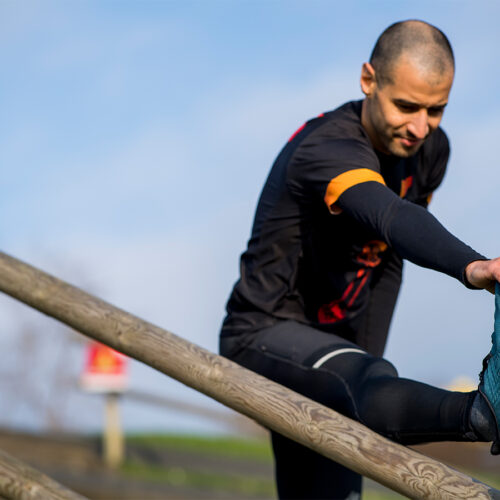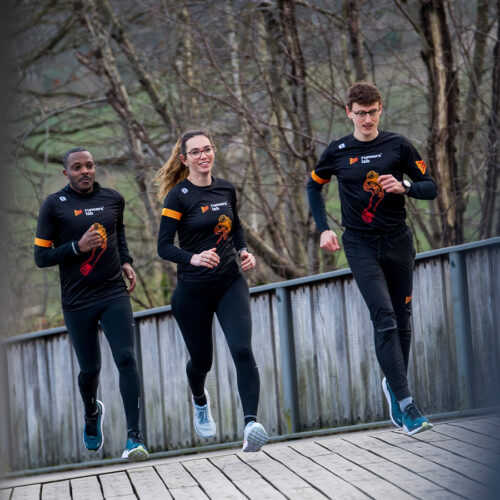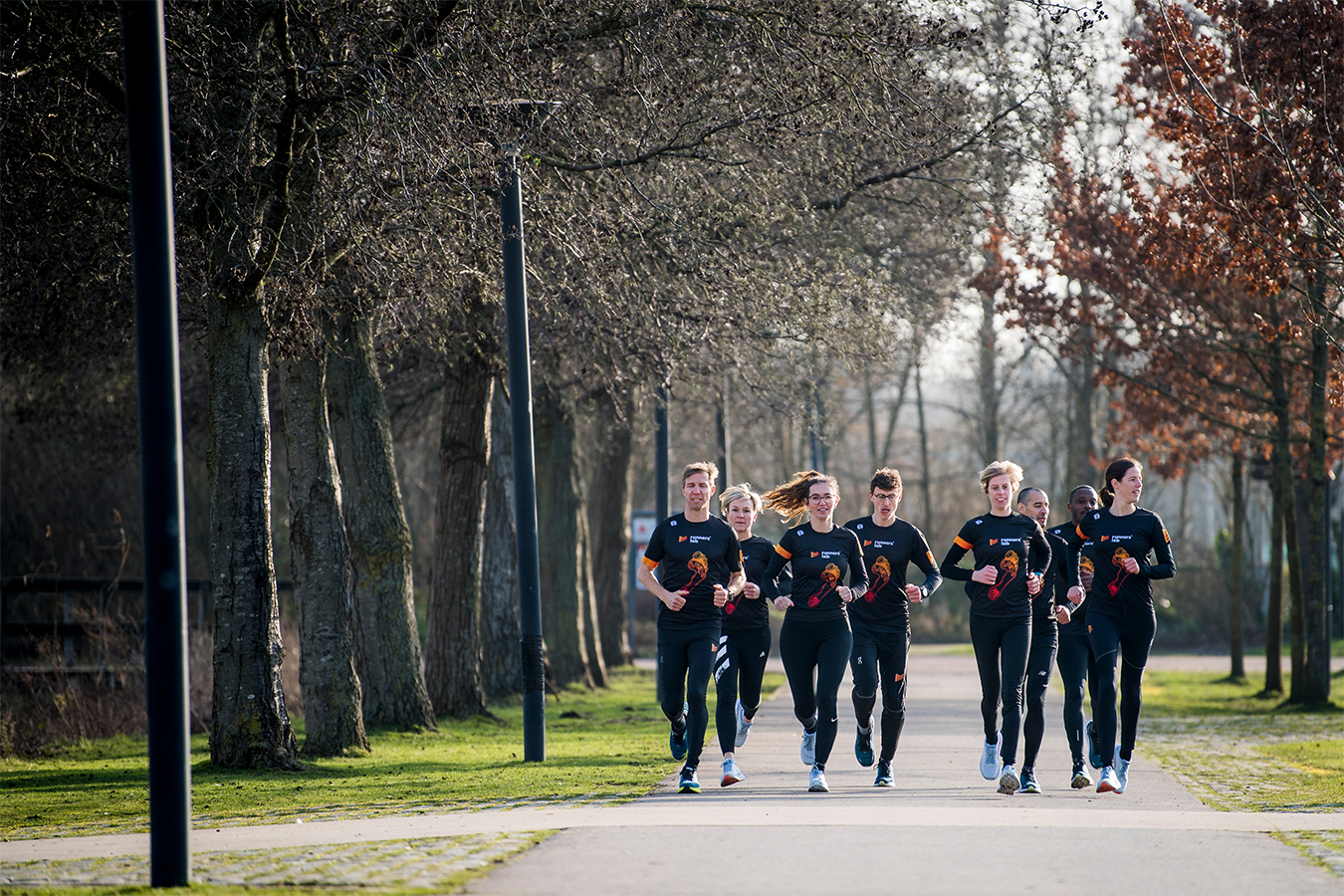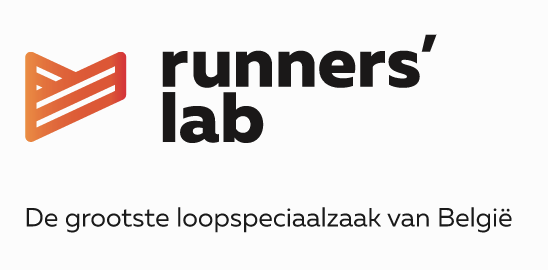The man with the hammer? Long time no see. With a few small points of attention in your diet, you won’t have to encounter him again either. We would like to share some tips.
Before – Fueling before the start: what, when and why?
First things first: filling the fuel tank. You don’t enter the track with a car that’s in red, do you? Exactly. So dwell on the type of effort you face, before starting.
Long, intense effort
Is a long, high-intensity effort scheduled? Then carbohydrates become your partner in crime. Think about (white) bread, (white) pasta, rice, and oh yes, pancakes! In addition, try to keep fats, protein and fiber low. Whole wheat pasta with a good portion of minced meat in the bolognaise sauce? Forget it. Pancakes with jam or honey? Go ahead! Pancakes with choco? Alas, life is not that beautiful now.
Short(er), moderately intense exercise
Are both the duration and intensity of your effort moderate? Then pay attention in particular to the amount of fats on your plate. Fats can slow down gastric emptying, causing gastrointestinal distress. If you exercise at low to moderate intensity you will not only tap into carbohydrates, but also your own fats for energy. Still, it is recommended to take something of carbohydrate beforehand. A small serving of protein is also definitely possible. Sandwiches with half savory toppings and half sweet toppings? Ideal!

When do we slide in?
And now: the timing. During exercise, the body is busy pumping blood to your muscles so they have the energy they need. As a result, less energy is put into the digestive system. So it is important to have your last large meal 2 to 3 hours before exercise. Is it “race day”? Then you may even count on 3 to 4 hours in advance, just to be sure. Do you stick to a big snack like a bowl of oatmeal beforehand? Then you still get green light to eat it up to 1 to 1.5 hours beforehand. Small snacks such as a banana, gingerbread, isotonic sports drink, gummies, energy bar … you can feel free to consume up to 15 min before the start.
It was only about eating, but what about drinking?
As light as possible preferably. We’re talking about the color your urine should be. In fact, you can apply this rule anytime, even on days without sports. Is your urine (too) dark before exercise? Then drink about 5 to 10 ml per kilogram of body weight 2 to 4 hours beforehand. Drinking an extra glass of water 15 minutes before exercising, is also a good recommendation. In hot weather, don’t forget to replenish your electrolytes. The SIS electrolyte tabs are a handy – and tasty – tool for this.

During – Let’s go! What do we eat?
Fast legs: check. Condition: check. Fun: present. Nutrition: um…? Again, whether it is best to eat or drink something along the way depends on the duration and intensity of your exercise. Efforts up to 75-90 min can theoretically be completed perfectly without taking extra carbohydrates. Are you running toward two hours or at a high intensity? Then it is recommended to take about 30 g of carbohydrates per hour. This is roughly equivalent to 500 ml of isotonic sports drink, one ripe banana, two slices of gingerbread, one energy bar and some energy gels. Most gels contain about 20 g of carbohydrates.
From as soon as you are in action for more than two hours, aim for 60 g of carbohydrates per hour. Are you still unstoppable? From efforts longer than three hours, 90 g of carbohydrates per hour is recommended. Note: In this case, choose products where the carbohydrate composition has a 2:1 ratio of glucose to fructose. Otherwise, your stomach will hit the brakes.
And what about moisture?
Good of you to ask! A fluid loss of more than 2% equals performance loss. We want to prevent that. How much fluid you should take in between is very dependent on your sweat loss. Some sweat just a little more than others. A good, general rule is to aim for a minimum of 500 ml per hour. In warm temperatures, of course, this rule may vary. Avoid small sips and try to take about 150 ml each time you drink.
After – Meal at the finish line
It’s over, you made it. You didn’t pass by the man with the hammer, yet it is not the time to let go of the reins because your muscles are screaming for the right nutrients. And yes, it is not abnormal for your body to protest at the thought of food after strenuous exercise. But take it from us, it’s really important after a spirited effort to eat something as soon as possible. Preferably a combination of 20 to 30 g of (rapidly absorbable) protein with 0.6 to 1.2 g of carbohydrates per kilogram of body weight. The exact amount of carbohydrates depends on the intensity. After light or short exercise, a classic meal consisting of carbohydrates (pasta/bread/potatoes/…), proteins (meat/fish/milk products/…), vegetables and healthy fats is sufficient. For heavy exertion, it is best to drink a recovery shake as soon as possible afterwards to throw yourself into your recovery meal.
Should that be a “real” recovery shake?
They are convenient because you immediately get the right proportions in and the proteins are quickly absorbed. Of course, a simple Cécémel is also a good idea due to its mix of carbohydrates, protein and electrolytes. When a quick recovery is needed, a chocolate milk is slightly less optimal. The proteins are absorbed more slowly and you still have to search a bit for the right ratio yourself.
Coming up in part 2/2
The selection of sports drinks, bars and gels is vast. In the second part of this sports nutrition special, we will elaborate on the range of sports nutrition in our web shop. In the meantime, feel free to take a look here already.

